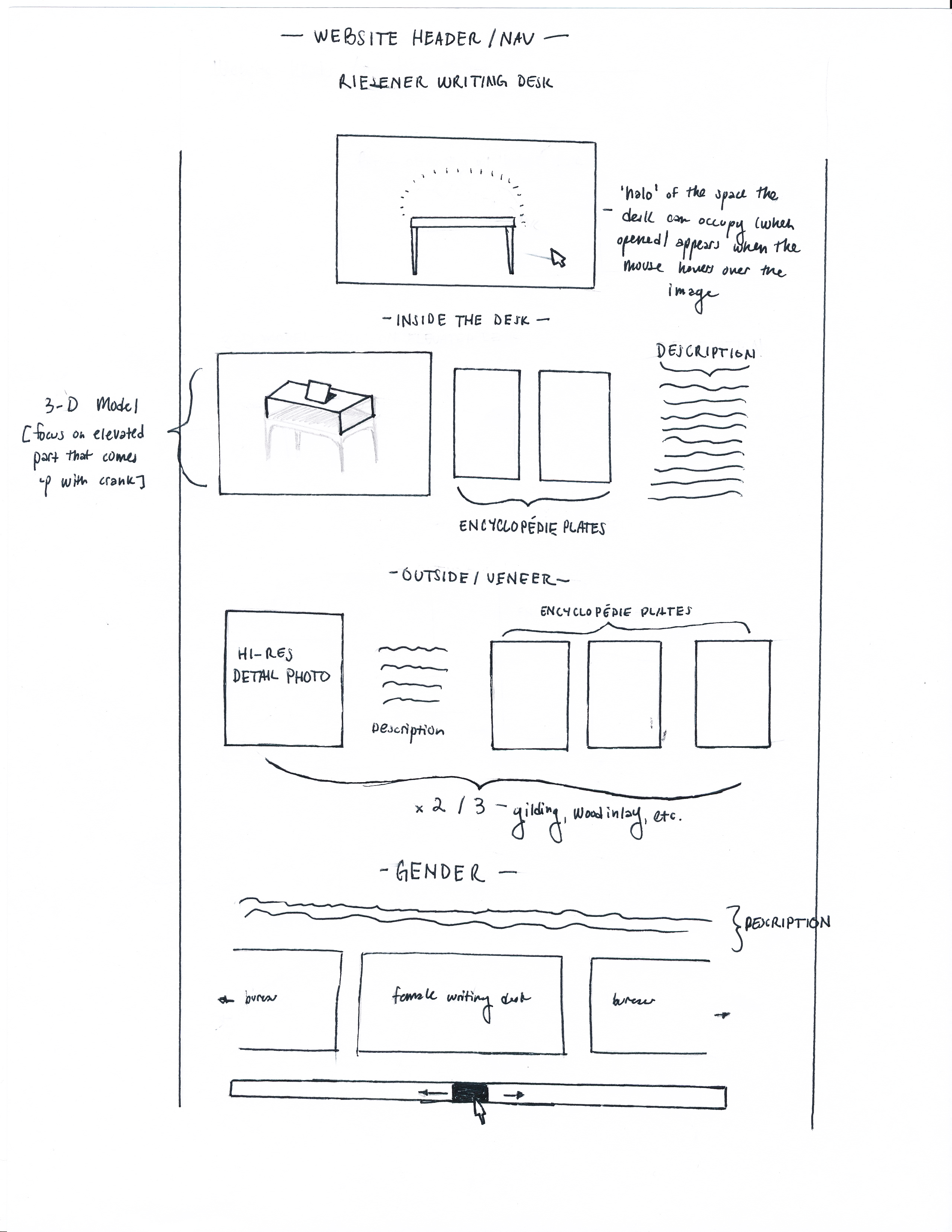Project Proposal – Riesener Desk
I have a few ideas about how I’d like to explore this object. I’m especially interested in its mechanical nature and how it operates on a level below its veneer, as that aspect of it is virtually invisible when looking at the desk on display in the Tessé Room. I would love to virtually separate the function of the desk from its decoration, in order to understand both in isolation and also how they work together. I feel like mapping out its mechanical skeleton, in contrast to its outside shell, could be very interesting. I want to do some 3-D modeling but would want to do so only for a specific part of the desk. Because the open desk isn’t displayed in the Tessé Room, I would focus on modeling the top section of the desk, when fully opened with the mirror/writing surface elevated. At the top of the webpage, I’d include an image of the desk that, when one hovers their mouse over it, is given a “halo” which represents the amount of space the desk can take up when fully opened. Seeing this mechanism fully unfolded then would draw attention and curiosity towards how it was made, so I would want to isolate different elements of the desk and compare them with plates from the Encyclopédie which show the workers, tools, or processes that went into making them. Ideally I want viewers to understand it in a way that is more reliant on visuals than words, but I would have to include a short description.
The second section of my page would focus on the veneer of the object, comparing the final products with the processes that went into them. For instance, I’d use a close-up image of a piece of gilt bronze on the desk and place it next to plates of the Encyclopédie that demonstrate how they’re made, similar to what I’ve described for the inner workings on the desk. I’d do this a few times for different craft elements of the desk, like wood inlay. Again I would want the visuals to speak for themselves as much as possible, because part of the spirit of the Encyclopédie was making this information accessible to the public. I would keep written descriptions short and only include crucial information.
I’m also really interested in what the implications of the prescribed gender of the object. I think it would be important to underscore that this is an object designed and created by men, and in fact many groups of men, but for use by women. I would want to explore the relationship between the female customer who was influencing the male maker through her consumer desires. I think it’s fascinating that women were explicitly being granted a private world through the secrecy of their desks, with locks and hidden drawers. While simultaneously the use of the desk could become a means of performance for an onlooker. I am unsure of how to explore this idea visually or digitally. I was considering maybe including some sort of horizontal scrolling feature that showed images of other desks from the Wrightsman Galleries (similar to the Cooper Hewitt feature of showing all objects of one category together), including male bureaus so that one could compare them and understand the level of variety that existed amongst desks, both in an aesthetic and gendered way.
